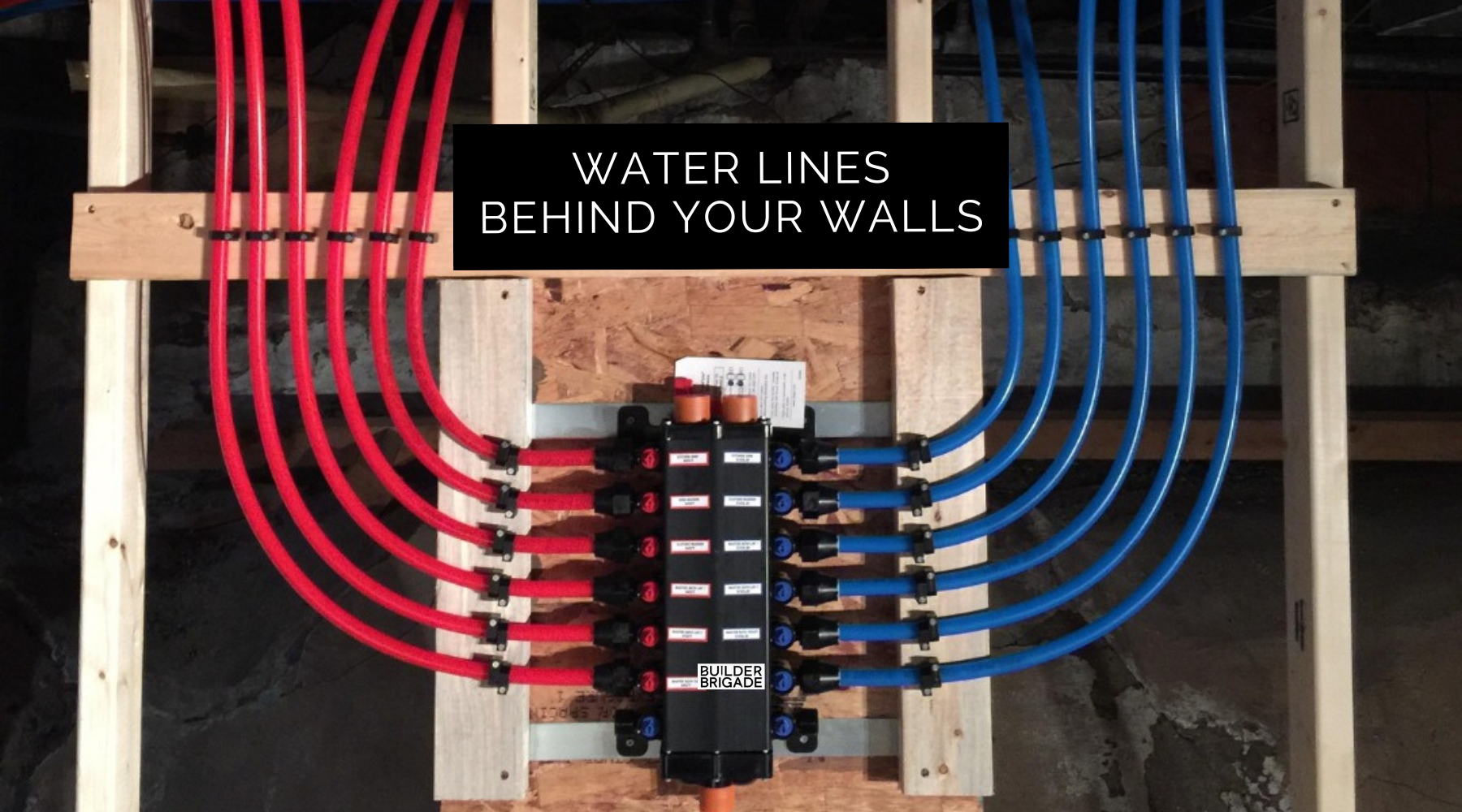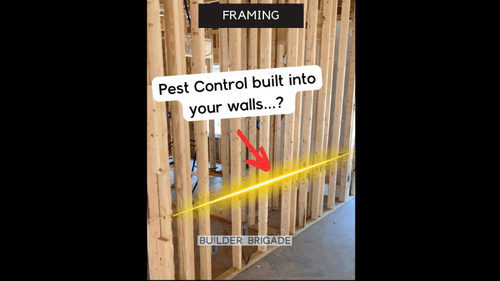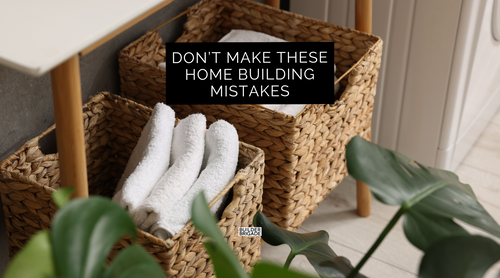Which Water Lines Should Go Behind Your Walls?

Most new builds today go with PEX, but like most things in construction, every option comes with its own pros and cons. Here’s a breakdown to help you understand what’s running behind your drywall.
PEX (The Modern Favorite)
PEX has quickly become the go-to choice for new homes, and it’s easy to see why. It’s super flexible, which makes it fast and easy to install especially in tight spaces or around corners. It also handles freezing better than copper or CPVC, and it requires fewer fittings, which means fewer potential leak points. But it’s not perfect. Mice have been known to chew on it (weird but true), and it’s sensitive to UV light, so it can’t be exposed to sunlight.

Copper (The OG)
Copper has been the gold standard for decades but is rare to find today. It’s incredibly durable, naturally resistant to bacteria, and it’s fire-resistant, which makes it a solid choice for peace of mind. That said, copper is expensive! Both in terms of material and labor. It can also corrode over time if your water is particularly acidic, and the installation process is more involved than with PEX or CPVC.

CPVC (Still Hanging On)
CPVC is a bit of an old-school option, but it’s still used in some builds. It’s inexpensive, resists corrosion, and is safe for hot water use. But it can be brittle over time and more prone to cracking, especially if not installed carefully. You’re less likely to see CPVC in modern custom homes, but it's still worth knowing about.

For most people, PEX is the winner because it’s fast, cost-effective, and works well in most climates. But your location, water quality, and long-term goals should all play a part in the decision.
If you’re planning a new build or major renovation be sure to grab The Ultimate Home Building Checklist. It’s packed with insights just like these! The things you don’t think about until someone points them out.
Featured Articles

Home Theater Movie Room Checklist
February 15, 2025

In wall Pest Control.. Is this for real? 🐜
June 19, 2023 - 2 mins read

Must-Have New Home Features This Year
February 03, 2025

The Biggest Home Building Mistakes
December 27, 2024
